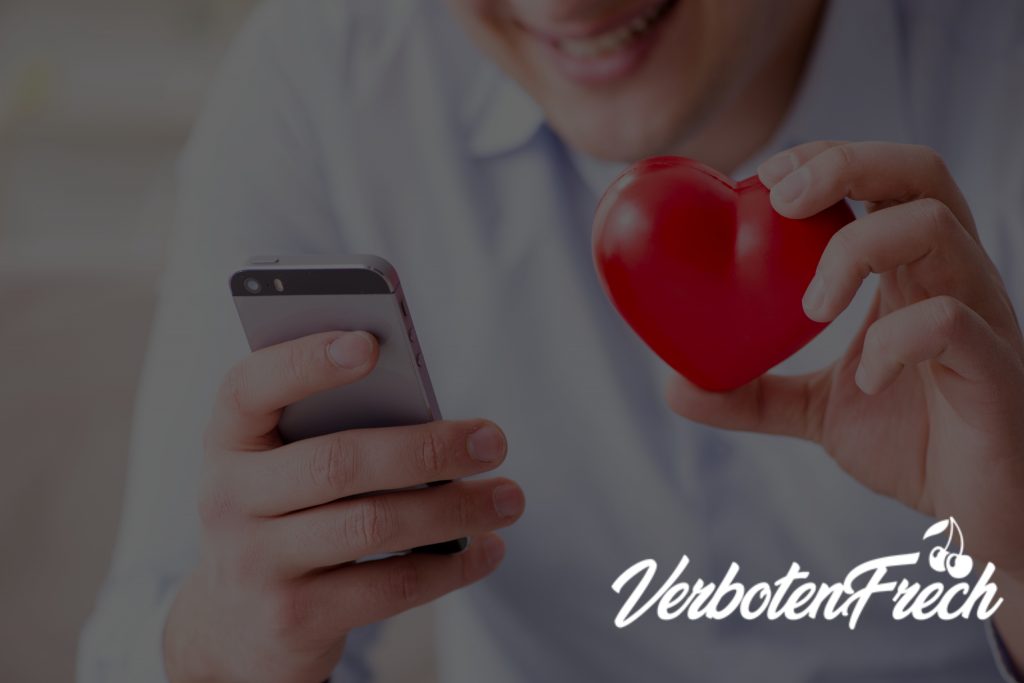Gay Chat 101: Understanding The Lingo And Culture Of LGBTQ+ Communication

Navigating the world of LGBTQ+ communication can be a bit overwhelming, especially if you’re new to it. From the various terms and acronyms to the unique cultural norms, there’s a lot to learn. But fear not, we’re here to help you navigate the ins and outs of gay chat.
With the evolution of language and societal norms, the LGBTQ+ community has developed its own set of vocabulary and communication styles. Understanding this lingo and culture is essential for effective communication and building connections within the community.
Whether you identify as LGBTQ+ or are simply looking to educate yourself on the topic, this article will provide you with a comprehensive guide to understanding the lingo and culture of LGBTQ+ communication. By familiarizing yourself with these aspects, you’ll be better equipped to engage in meaningful conversations and interactions within the community.
Understanding LGBTQ+ Language and Terminology
In today’s diverse society, it is crucial to understand and use LGBTQ+ language and terminology appropriately. This not only shows respect and inclusion but also fosters a safe and accepting environment for all individuals. LGBTQ+ refers to lesbian, gay, bisexual, transgender, queer/questioning, and others who identify as part of the community.
Using inclusive language is of utmost importance as it acknowledges and affirms diverse gender identities and sexual orientations. By understanding and respecting LGBTQ+ terminology, we can avoid diminishing or invalidating someone’s identity. It creates an environment where everyone feels accepted, valued, and equal.
Familiarizing ourselves with commonly used LGBTQ+ acronyms is essential for effective communication. For example, LGBT stands for lesbian, gay, bisexual, and transgender. LGBTQIA+ includes intersex and asexual individuals, while the “+” symbolizes the inclusion of other identities within the community. Being aware of these acronyms helps in understanding and respecting diversity within this community.
By expanding our understanding of LGBTQ+ language and terminology, we can promote inclusivity, reduce discrimination, and create a more accepting society. It is vital to educate ourselves and engage in meaningful conversations to support and uplift the LGBTQ+ community. Let us commit to using inclusive language and terminology that shows dignity and respect for all individuals, regardless of their sexual orientation or gender identity.
Gay Chat Platforms and Communication Methods
Gaycvhat platforms and communication methods have become increasingly popular within the LGBTQ+ community. These platforms provide a safe and inclusive space where individuals can connect, chat, and build meaningful relationships with like-minded individuals. Here, we provide a brief overview of some popular gaycvhat platforms and highlight the features and etiquette within these communities.
One popular gaycvhat platform is Grindr. It is a location-based dating app specifically designed for gay, bisexual, and transgender individuals. Users can create a profile, upload photos, and engage in conversations with other users nearby. Grindr also offers additional features like filters to search for specific interests or types of individuals.
Another widely used platform is Scruff. Similar to Grindr, Scruff enables users to connect with gay, bi, and trans men. It has features like profile customization and communities based on interests, allowing users to engage in conversations with individuals who share similar hobbies or passions.
When it comes to LGBTQ+ chat communities, there are certain etiquettes and norms that individuals should be aware of. Respecting others’ privacy and boundaries is crucial. Avoiding discriminatory language or behavior and treating others with respect are key elements of these communities. Additionally, being mindful of varying identities within the LGBTQ+ spectrum and using inclusive language fosters a welcoming environment.
Emojis and Symbols in LGBTQ+ Communication
Emojis and symbols play a significant role in LGBTQ+ communication, serving as concise visual representations of identities, experiences, and emotions within the community. Understanding the meanings behind these commonly used symbols can foster inclusivity and enhance comprehension within LGBTQ+ conversations.
The rainbow flag emoji, 🏳️🌈, is arguably the most recognizable symbol of the LGBTQ+ community. It represents diversity, pride, and the ongoing fight for equality. Additionally, the transgender flag emoji, 🏳️⚧️, is another powerful symbol, signifying support for transgender rights and visibility.
Other commonly used LGBTQ+ emojis and symbols include, but are not limited to, the double Venus symbol ♀️♀️, representing lesbian relationships; the double Mars symbol ♂️♂️, indicating gay relationships; and the intersex symbol ⚥, representing individuals with non-binary gender identities. Emoticons like “🌈✊” also communicate solidarity and support for the LGBTQ+ community.
These emojis and symbols facilitate communication by providing members of the LGBTQ+ community with a sense of identity, belonging, and understanding. They allow individuals to express themselves succinctly, especially in digital conversations where brevity is paramount.
Overall, emojis and symbols in LGBTQ+ communication play a crucial role in conveying nuanced meanings, promoting visibility, and fostering a sense of community. They facilitate effective and inclusive communication, enabling individuals to express their experiences and emotions in a concise and universally understood manner.
Navigating LGBTQ+ Culture and Etiquette
Navigating LGBTQ+ culture and etiquette involves understanding the social norms and customs within these vibrant communities. It is crucial to create a safe and inclusive environment by acquainting ourselves with the unique experiences and challenges faced by LGBTQ+ individuals.
One important aspect is the topic of coming out. Respect and sensitivity are key when discussing someone’s journey towards coming out as LGBTQ+. It is essential to provide a supportive environment for individuals to share their stories and experiences without judgment or assumption.
Participating in LGBTQ+ events is an excellent way to immerse oneself in the community and show support. Being mindful of the event’s significance and purpose is crucial in order to avoid appropriating or commodifying the experiences of LGBTQ+ individuals.
Support networks within LGBTQ+ communities play a vital role in providing emotional support, resources, and advocacy. It is important to be respectful of these spaces and their specific guidelines. Active listening, avoiding assumptions, and using inclusive language are necessary when engaging in conversations or seeking support within these networks.
Finally, ensuring respectful and inclusive communication is crucial within LGBTQ+ spaces. This includes using appropriate pronouns, respecting individuals’ identities and boundaries, and refraining from making assumptions or offensive comments. Taking the time to educate ourselves about LGBTQ+ terminology and issues will allow us to communicate effectively and sensitively.
Challenges and Considerations in LGBTQ+ Communication
Communication within the LGBTQ+ community can be challenging due to the presence of discrimination and bias. It is important to address common misconceptions and stereotypes in order to create a safe and inclusive environment for LGBTQ+ individuals.
One significant challenge is the perpetuation of stereotypes about LGBTQ+ individuals. Society often imposes preconceived notions about gender identity and sexual orientation, leading to misunderstandings and biases. To overcome this challenge, it is important to educate others about the diversity within the LGBTQ+ community, emphasizing that not everyone fits into stereotypes.
Another challenge is discrimination and prejudice. LGBTQ+ individuals often face prejudice and discrimination in various aspects of life, including communication. This can lead to a lack of trust and fear of judgment, making it difficult for individuals to express themselves authentically. To address this challenge, it is crucial to create a safe and inclusive communication environment where everyone feels respected and accepted.
Strategies for creating such an environment include active listening, promoting empathy, and challenging discriminatory language or behavior. It is important to actively listen to LGBTQ+ individuals, providing them with a space to share their experiences and emotions. Empathy is essential in understanding each individual’s unique journey and perspectives. Additionally, it is crucial to challenge discriminatory language or behavior, intervening whenever necessary to create a safe space.

Conclusion
In conclusion, ongoing education and understanding in LGBTQ+ communication are crucial for fostering respectful and inclusive communities. By continuously educating ourselves about the unique experiences, challenges, and identities within the LGBTQ+ community, we can promote empathetic and inclusive communication that elevates everyone’s voices. It is essential to recognize that LGBTQ+ individuals have diverse experiences and identities, and by actively engaging in ongoing education, we can better understand and support them. Engaging in respectful and inclusive communication within LGBTQ+ communities is not only about using proper terminology but also about actively listening, validating experiences, and challenging our own biases. It is through ongoing education and understanding that we can cultivate safe and inclusive spaces for LGBTQ+ individuals to express themselves authentically and without fear of judgment or discrimination. Together, let us commit to learning, growing, and advocating for a world that embraces and celebrates the diversity of the LGBTQ+ community.






